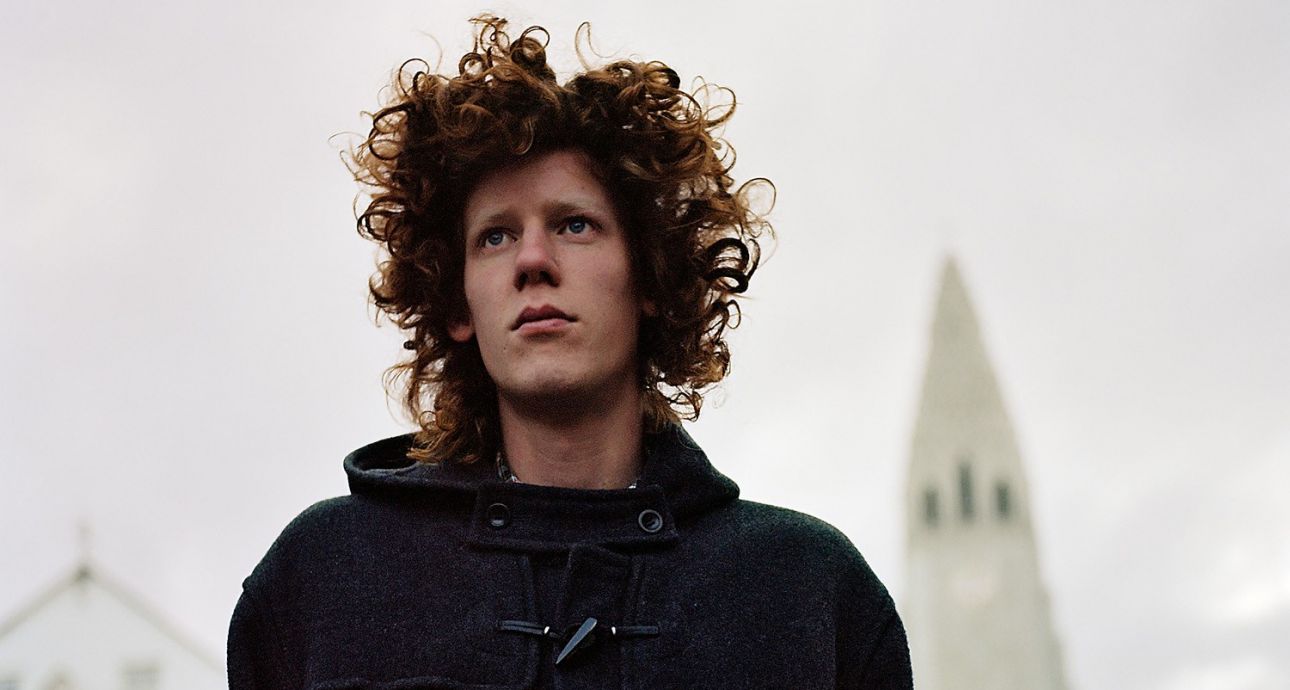
0.1% of Iceland in Portraits by Varvara Lozenko

Photographer from Moscow. Studied linguistics and art history in Moscow State University. She is inspired by Ryan McGinley, Yann Arthus-Bertrand and Alain Laboile.
Varvara Lozenko planned to take 100 photographs, but then decided that 320 was better — because it is 1/1000 part of the population of Iceland. For 320 Icelanders she photographed people from different regions, of different ages and professions.
“For me, who comes from a city with a population number close to 20 million, it’s absolutely amazing and unfathomable what life in such a tiny country like Iceland is like, — the photographer says. — Icelanders are extraordinarily relaxed and easygoing; they never yell at one another, arguments are extremely rare, family scenes or public outbursts of bad temper are close to zero. In a country with no crowds there is no need to get famous – everyone is a VIP. So if you ask teenagers and young people what whey want to do in life, they say: a doctor, a teacher, a dentist, a kindergarten educator, a driver. And no one wants to be president or a movie star.”
Alvin Möller, 11, Hugbjört Möller, 7, and their dog Grímur.
— I met their parents and took a family portrait on their farm Ytra Lón in summer 2007. Alvin was six at the time and Hugbjört about two. At the end of January 2013 I revisited Langanes peninsula and their farm, the North-Easternmost farm in Iceland. The kids had grown: Hugbjört learned to incubate and grow chickens, knit, make fried eggs and developed an interest for fashion design. And Alvin now plays football and is writing a book on magic rituals. This photo was taken on January 30, 2013 in the midst of a snowstorm.
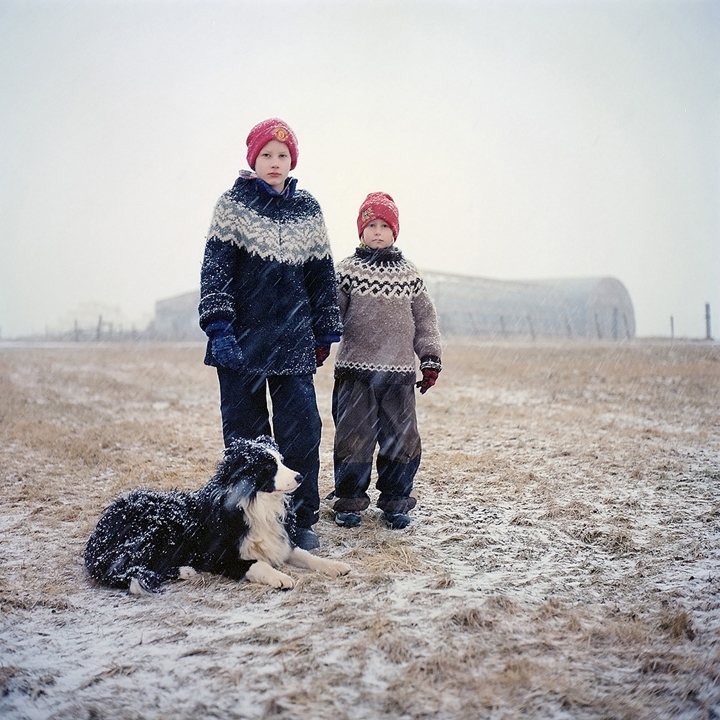
Æsa Gísladóttir, 36, owner of a hostel in Vik.
— We met when Æsa suggested to Haraldur, at whose house I was staying, to take me up to the mountains where the Northern Lights can better be observed than from the Myraldur Valley. It was January 12th 2013, my first day in Iceland in wintertime, and such amazing luck!
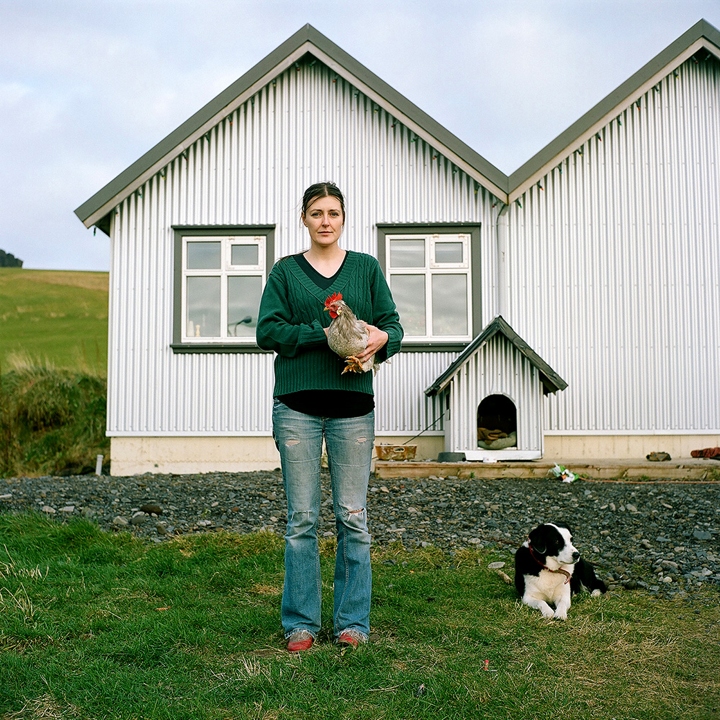
Guðrun Marta Gunnarsdóttir, 61, and Sigurður Sigfusson, 72, from Þorshöfn.
— She used to work in a fish factory; he is a long-distance truck driver now retired. Siggi is a genius at accordion. When he takes his instrument out and sits down on his terrace to play, the few passers-by (because Þorshöfn is a very small place) stop to listen and applaud and yell encouragement from the street. The duet performs Icelandic folk songs as well as Siggi’s own music.
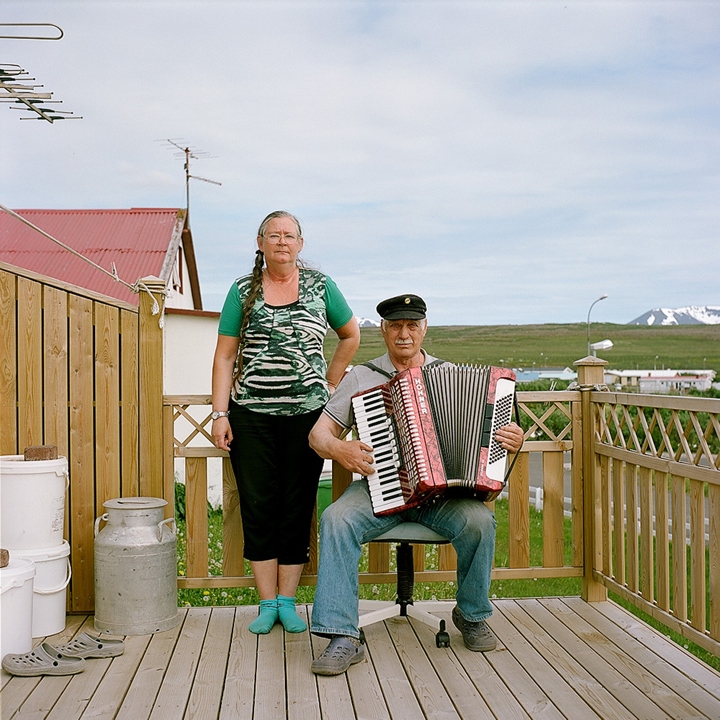
Hans Eiriksson, 69, retired bus driver from Stoðvarfjörður.
— We were driving on the A-1 in the East Fjörds, a few kilometres before Stoðvarfjörður, when I saw a fisherman on the righthand side of the road. It was the first human being I’d seen for dozens of kilometers on the way from Djupivogur to Egilsstaðir. When we stopped and I came up to Hans, surprisingly, he started putting his rod together as if preparing to leave. I asked him what was wrong. ‘No catch today,’ he replied.
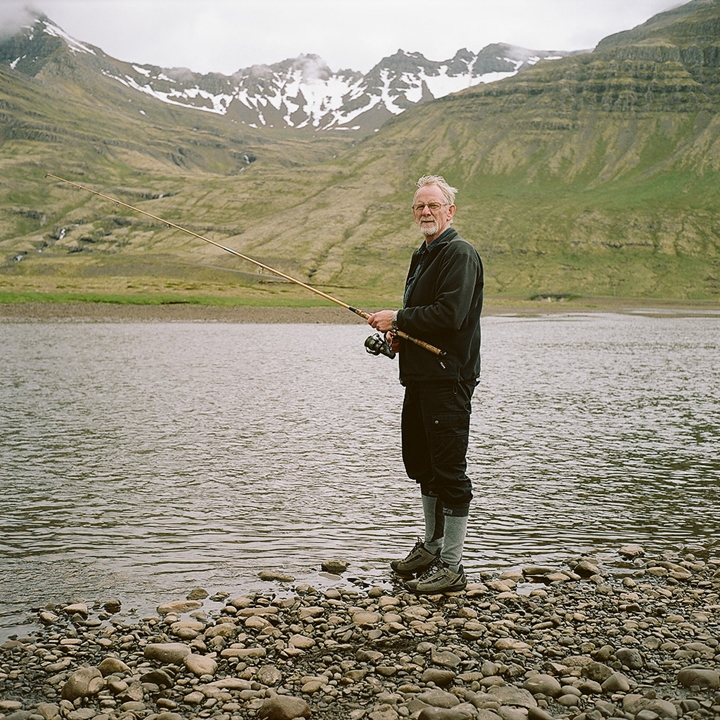
Hilmar Pálsson, 62, insurance agent from Ísafjördur.
— We met as he was getting ready to set off on a three-day adventure trip. Five or six people were taking part in it: all of them Hilmar’s friends were also insurance agents. About five minutes after this shot they jumped into a jeep overloaded with camping equipment and were off. Hilmar said that in Iceland it is customary to insure everything: yourself, your house, car, stable, garage, horses, dogs, cats – everything. The weather was quite bright, if not exactly sunny. It was towards 3 p.m., it was Saturday, June 28th 2014.
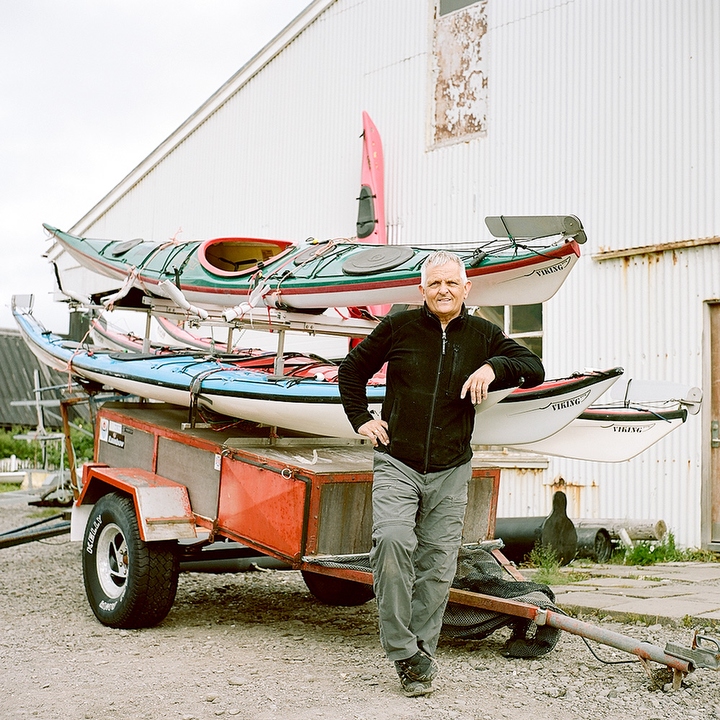
Jón Hólm Hafsteinnenson, 46
— Works as a docker in the port of Siglufjörđur,unloads fish containers from incoming ships early in the morning and loads processed and frozen fish in ice boxes onto huge refrigerator ships in the early afternoon. I took this portrait picture of Jón later in the afternoon when his work day was almost over. It was one o’clock, the weather was calm, but frosty. Jón confessed that he doesn’t have a computer or email address. So when this picture was published in a magazine I had to send it with regular snail mail. I hope he liked it. The fish in the photograph was carefully selected by him – it was one of the biggest cods from the morning catch.
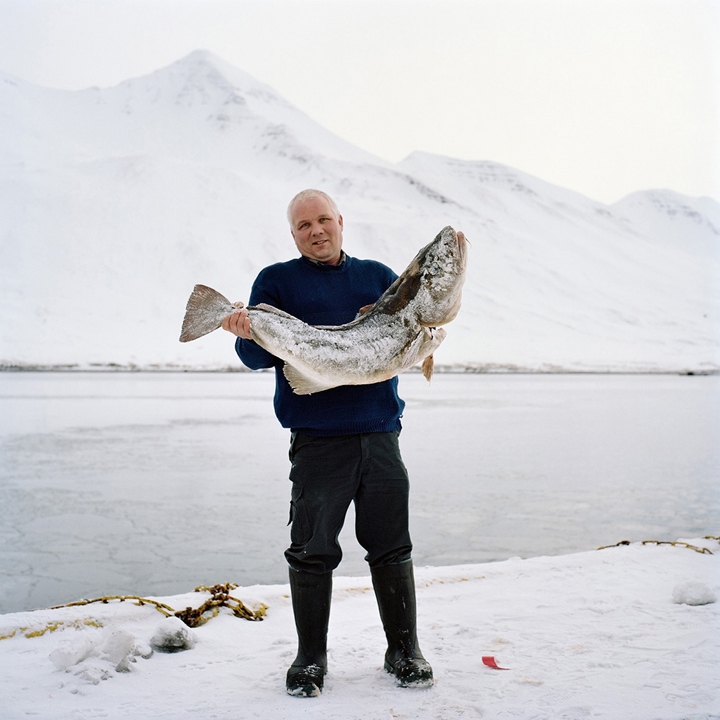
The boy from the ferry
— He was waving as the ferry, Baldur, was coming to shore. I was standing on the pier, and the boy was on the second deck, probably 15 meters from me, and he was smiling and waving his hand. It was apparent he was thinking it was him I was photographing and no one else. The next day I met him again, he was with a girl, most probably a sister. As soon as he saw me he yelled, ‘Myndir! Myndir!’ (‘a picture, a picture’). So I pretended I was taking a picture of him again. On the third day I met the children in the harbor; they were either leaving or seeing someone off. That was when I asked him to pose for me for real. For some reason I decided at one that this would just be ‘The Boy from the Ferry’. The weather was very clear, it was quite cold, but not as cold as on the day before. It was Sunday, July 6th, 2014, around 4 p.m.
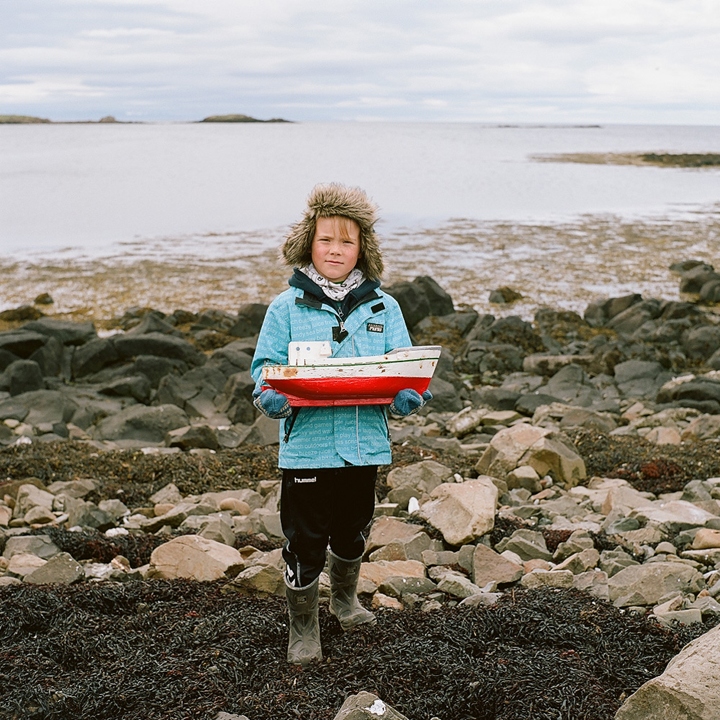
Einar Kristinn Helgason, 22, and Guðlaug Sigriður Gunnarsdóttir, 24, fish factory workers from Heimaey island.
— We met on Tuesday, June 10, 2014, at something like 7 p.m., in the harbor, they were cycling around, just for fun. Guðlaug said that the fish factory work was just a summer job for her, in fact, she studies pedagogy and would like to work with people with speech disabilities. The weather was very nice the whole day, with bright sunshine, but in the evening it turned a bit grey, with some rain.
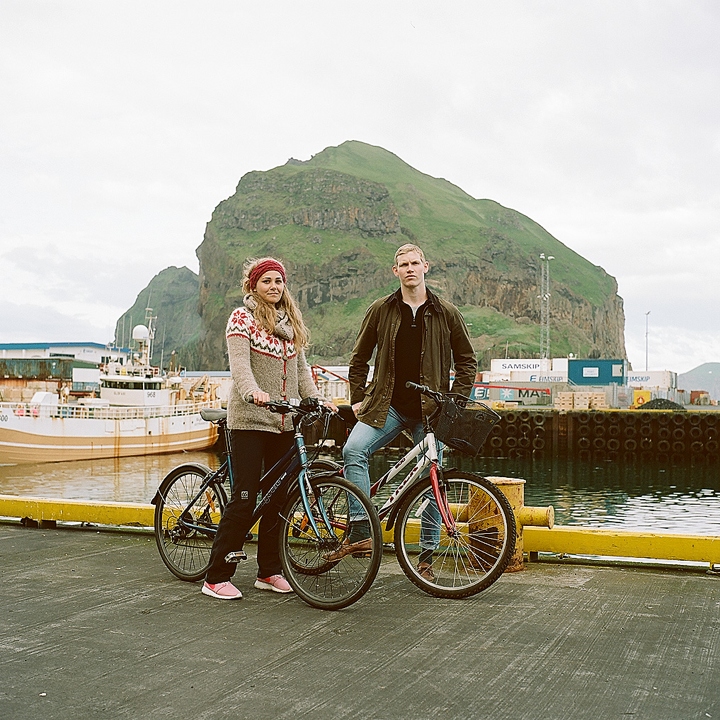
Elin Andrea Vikse Helgadottir, 20, from Súðavik in the West Fjörds.
— Elin works at the Arctic Fox museum, the only real employer in that tiny town. It is located in a small one-story house with an attic. Elin is doing all the work there: she is a barman, a waitress, a ticket seller and a guide all in one. In her childhood her dad took her hunting so she knows quite a lot about arctic foxes. While I was taking her picture outside, the wife of the museum director was having a panic attack because the star of the collection, the white fox, was missing from his customary place beside the brown one. It was Friday, June 27, 2014, the weather was calm, almost without wind.
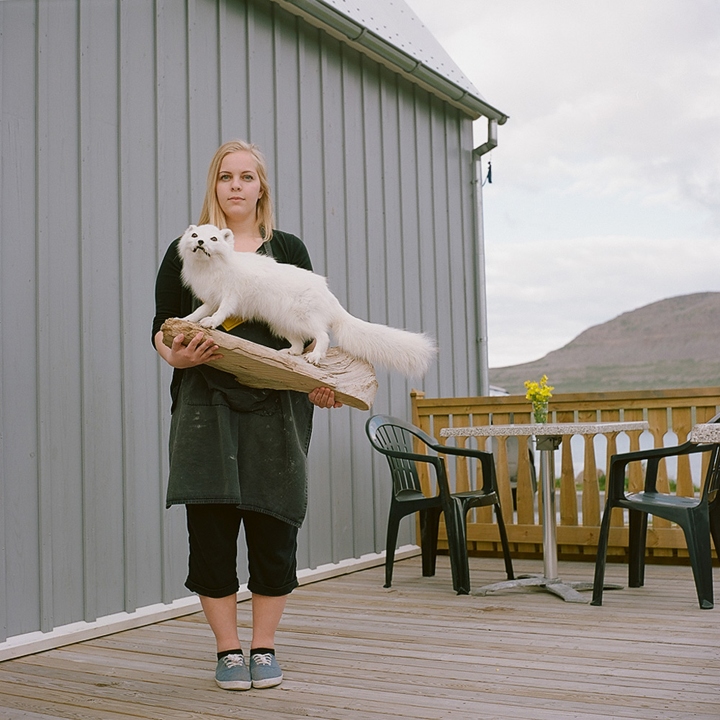
Kristinn Nikulasson, 54, mechanic from Kópavogur, one of Reykjavik’s major suburbs.
— In summer he spends a lot of time on Flatey island where he has a summerhouse. There is a huge difference between a normal summerhouse and a summerhouse on Flatey Island. Usually a summerhouse is something with a light structure, maybe even without serious heating facilities, where you can spend time from June till August. Kristinn’s house is called ‘The House on the Cliff,’ it was built in 1871. And his Fergusson tractor was made in 1958. Kristinn fixed it with his own hands and is very proud of it. We met on Flatey Island quite close to his house where he was driving in his tractor. There are no cars in Flatey (for reasons of protecting birds) but almost every serious holidaymaker has a tractor. It was Saturday, June 5, 2014, it was getting close to 4 p.m. The weather was very cold with a strong wind.
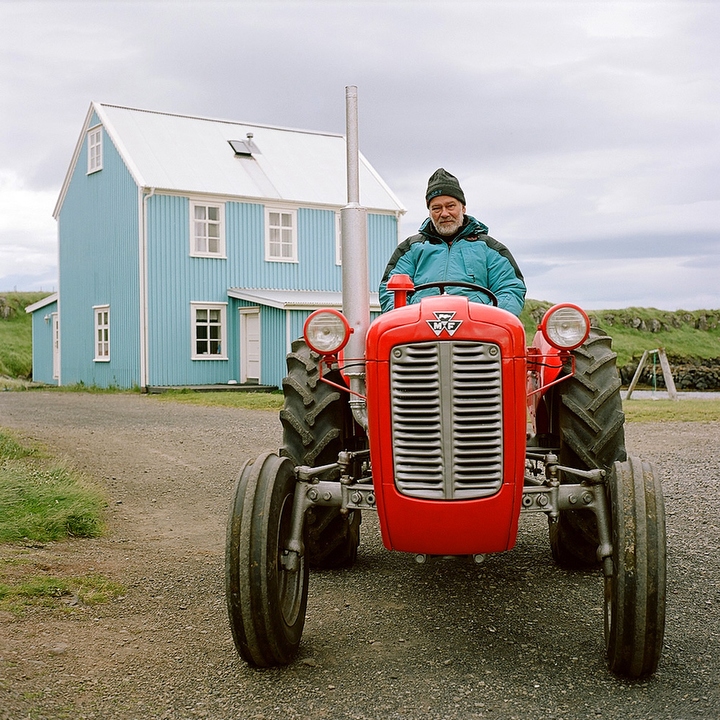
Gudjón V. Magnusson, 28, from Heimaey.
— He studied engineering and specializes in machinery construction for fish processing. We met on Sunday, June 8th 2014. I was walking in a golf course without being aware how dangerous it can be when someone rudely called after me to get out. So I was trying to get to safety as fast as I could when I saw two or three young Icelanders who were having a smoking break. They were laughing and seemed in a good mood, so I approached them and started a conversation. Gudjón told me he has always lived in Heimaey, was born and raised there, but had never played golf before (Heimaey has one of the best golf courses in Iceland), so his brother and his friends were teaching him. It was around 3 p.m., the weather was very calm, but somewhat overcast.
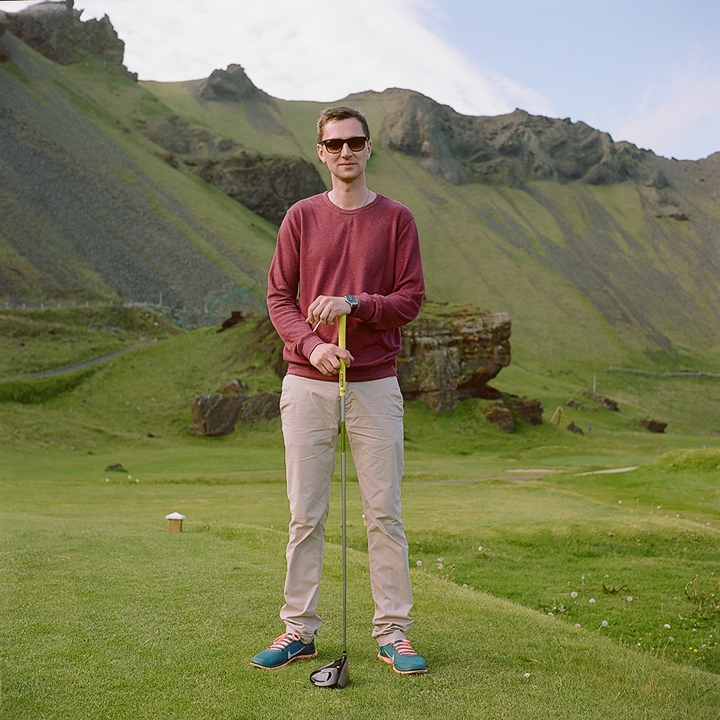
Björn Steinar Blumenstein, 23, student.
— He studies to be a designer, and would like to specialize in industrial design. At night-time he works as a bartender. He thinks that the feeling of freedom that one virtually inhales in Iceland has to do with the fact that it has no army, no military navy, and there’s very little police around because there’s no need for it. I met Björn on January 18th, 2013, at about noon, in Skólavörðustígur, the central street of Reykjavik. The weather was cloudy and chilly but there was no wind.
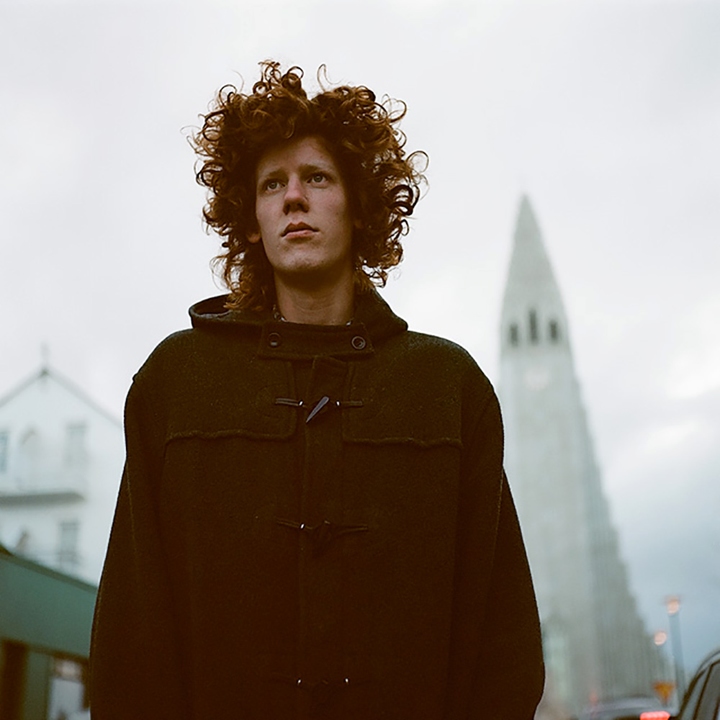
Inga Gottskálksdóttir, 48, and Ragnhildur Gottskálksdóttir, 57, owners of Gotta boutique in Laugurvegur in Reykjavik.
— All the women in their family take care of the shop – both of the sisters, their mother and Inga’s two daughters. Inga and Ragnhildur’s mother bake cakes especially for that occasion. Everyone who comes to Gotta on that day receives free coffee and a slice of homemade cake. We met on Thursday, June 5, 2014 when I accidentally stepped into their shop because it was raining very hard. It was around 1:30 p.m.
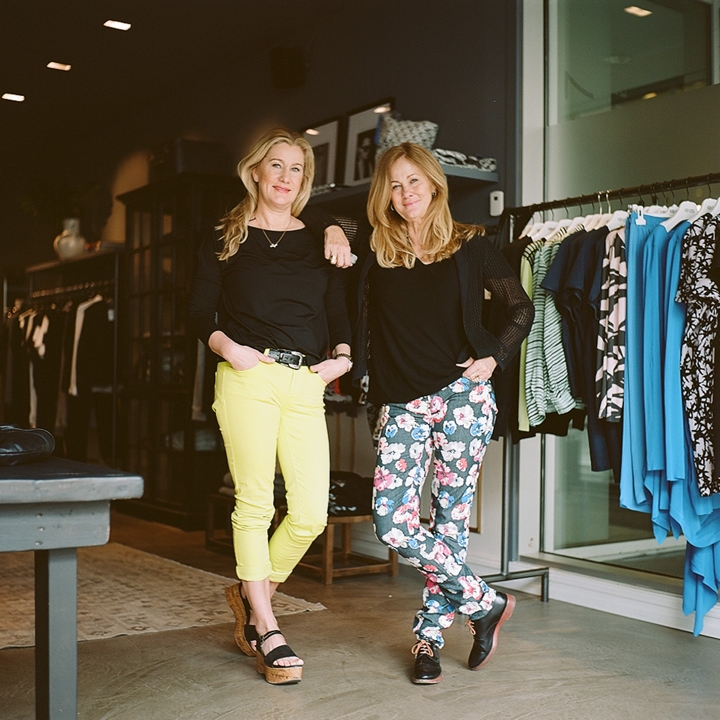
Bjarni Sigurjónsson, 62, retired.
— For 40 years he drove tourist buses around Reykjavik. Now he lives there in winter, and spends summer months on Flatey Island, where he has a house, completely refurbished and renovated, but originally built in the 19th century, but has heating, sewage and running water. I met Bjarni on Friday evening, July 4th, 2014, when he dropped by for dinner with my hosts – they were having seal. I took this picture of Brjartni in the harbor of Flatey, with the skull of one of the two horses once eaten on the island. The heads were then put into the sea for two years, afterwards the skulls were taken out and put on display under a ‘Welcome to Flatey!’ billboard. Island humor? I guess so. The weather was sunny and windy. It was after 5 p.m.
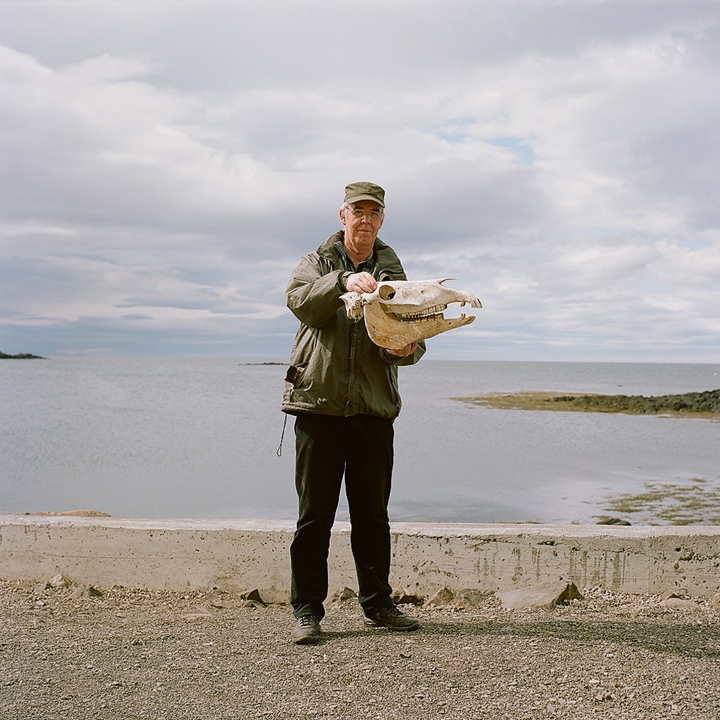
Óttar Sigurðsson, 54 (centre), Óddur Hallgrimsson, 54 (left) and Ásgeir Valur Flosason, 34, firemen from Reykjavik.
— We met at the ice-cream shop in the docks that is only known to the local people, but in spite of that is always full of customers. There is a really huge variety of tastes – maybe 40 or closer to 50 flavors, and it is always crammed with kids and pregnant women with prams. It was a little surprising to see three firemen in uniform, with enthusiasm for children, walk out and sit down on the the bench to enjoy newly bought cones, heavily loaded with ice-cream.
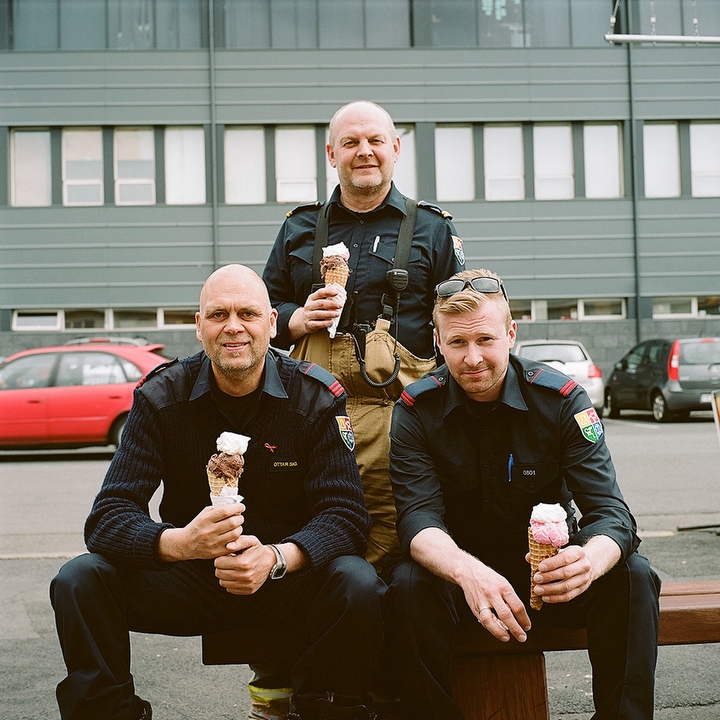
Árni Rúnar Þorvaldsson, 37, Raghildur Einarsdóttir, 37, Guðni Árnadottir, 13, Einar Karl Árnason, 12, Sólborg Árnadóttir, 1.
— Árni works at the Katla-center: it is an information center for tourists, and a kind of a natural history museum dedicated to the Katla eruptions epic history. Katla is the name of the volcano next to the Vik volcano. Raghildur, Árni’s wife, is the principal at the local school which is all-in-one: daycare center, kindergarden, primary and secondary school. Their youngest child name, little Sólborg, literally means ‘the sun city,’ I took their picture on Wednesday, October 16th, at about 3 p.m., in front of the kids’ school and their mother’s workplace. There was a strong wind and it was quite cloudy. Árni is a rather common name in Iceland. It means ‘eagle.’
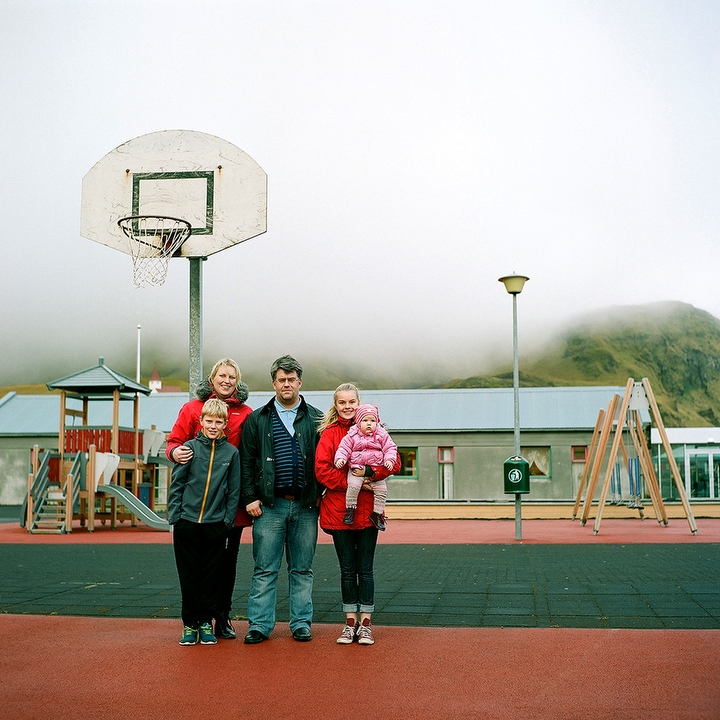
Anna Ólöf Jansdóttir, 15, and Aron Fannar Sigurgeirsson, 16, schoolchildren from Reykjavik.
— We met on Friday, June 5th 2014, when I was walking past the Art museum (Lístasafn). Some people, including Anna and Aron were exiting at that very moment. The young couple looked like they had just married, but in fact they were coming out of an exhibition opening. It was apparent that they are very much in love. ‘Maybe you are just too young to be married?’, I asked as if for no reason. ‘Yes, a bit too young,’ one of the moms, very festively dressed, pointed out. The weather was very warm and sunny on that day, the museum was just about to close, as it was nearly 5 p.m. All the museums in Iceland are open till that time.
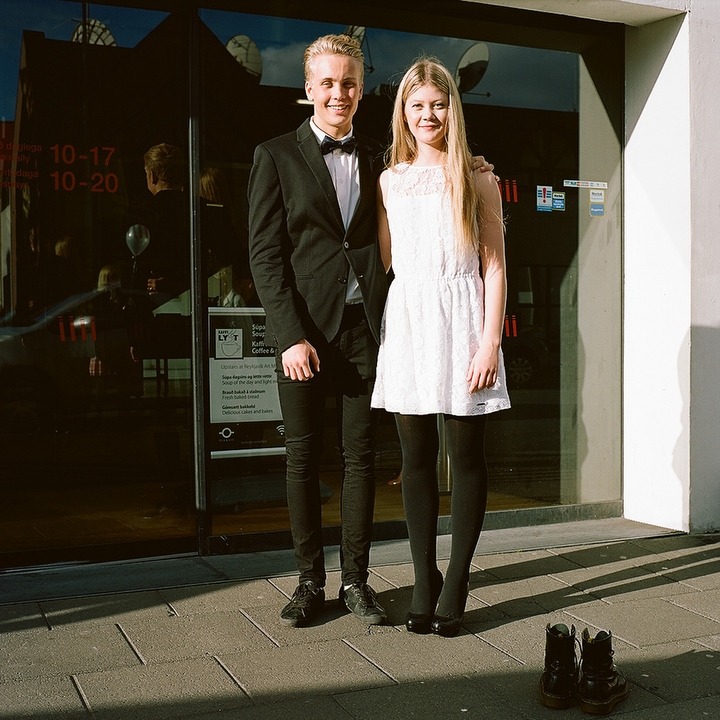
Esther Friðriksdóttir, 19, Valgerður Anna Ólafsdóttir, 19, Iris Friðriksdóttir, 17, from Reykjavik.
— We met on Wednesday, June 4th 2014, at around 3 p.m. I was walking on the docks, in the Retro cafe area, when suddenly I saw three young girls who were roller-blading on one of the piers. A pier is usually a pier – made of wooden boards – hence not the most conventional surface for rollers, but that’s what those three were doing. They explained that they had invented this sport about two years ago – synchronized roller-blading – and have been practicing it ever since. The weather was very warm and sunny without wind.
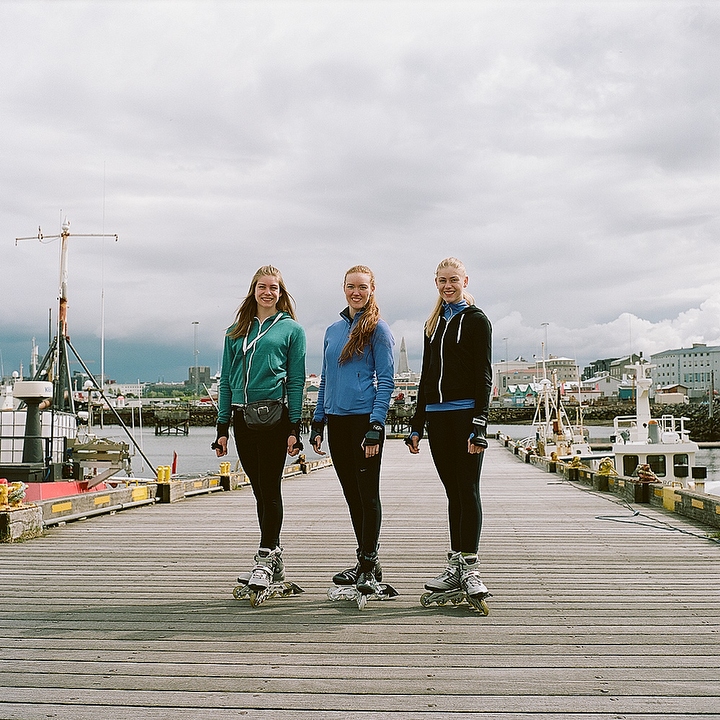
New and best




